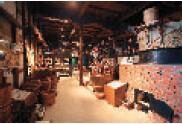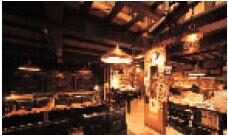Walking around the Ichinoseki city center, you will be welcomed by a harmony of the present and the past, a townscape filled with footsteps of great predecessors and literary men, and nostalgic buildings and melodies. Ichinoseki prospered as a castle town under nearly two centuries of rural hinterland in addition to supporting light manufacturing. Underlying Ichinoseki’s development has always been the area’s rich farming. In its history the city has produced many scholars,especially in Dutch studies and Medicine. Modern Ichinoseki was created by the amalgamation of three towns some 50 years ago.
-

Otsuki Gentaku (1757 -1827)
The eldest son of Icinoseki fief doctor Otsuki Genryo, and a student of Tatebe Seian, Gentaku learned Western medicine from Sugita Genpaku and Dutch from Maeno Ryotaku. He wrote Rangaku Kaitei, a Dutch language textbook. He opened the first Western science school Shirando; he also revised the translation of Anatomische Tabellen (Kaitai Shinsho) and completed the Chotei Kaitai Shinsho (revised Kaitai Shinsho).
Otsuki Bankei (1801 -1878)
The second son of Gentaku, Bankei was a Confucian scholar who cried for the opening of Japan to the West. He served as Headmaster of the Sendai fief school Yokendo. During the Boshin War, he had a strong philosophical influence on the feudal government, but he was imprisoned for a time after the war. He wrote many books including Kinkoshidan.
Otsuki Fumihiko (1847 -1928)
The third son of Bankei, Fumihiko was ordered by the Ministry of Education to compile a dictionary at the age of 29; he spent 16 years to compile the first Japanese dictionary Genkai, considered an immortal work in the history of Japanese dictionaries. He later worked on another dictionary, which was published as Daigenkai (Great Genkai) 10 years after his death.
Former Numata Samurai Residence

The residence of the Numata family, who served as chief counselors for the Ichinoseki clan in the later Edo period. The house has repeatedly survived the flooding of the Iwai River and stood for about 300 years.Tamura Shrine
A shrine raised to Sakanoue noTamuramaro, it was moved from the Tamura Mansion in Tokyo to Tsuriyama Park in the Taisho period, when the Tamura family moved to Ichinoseki.
Matsuo Basho Futaya-an Site

It is said that when Basho visited Ichinoseki and Hiraizumi, he spent two nights at the Kanamori residence, hence the name Futaya-an, or “two nights’ hermitage.”
-
Tokino Taiko Hour Drum

In the Edo period, the Ichinoseki fief had special permission of the shogunate government to use this hour drum. It was beaten twice a day, at noon and midnight. Today, it is housed in Chosho-ji Temple.Hoshoin Byozushi
A prefectural tangible cultural asset, Hoshoin Byozushi is a wooden feretory enshrined in Shoun-ji Temple. Hoshoin was a concubine of Date Masamune and mother of Date Munekatsu, and a wooden statue of her is placed inside the impressive Momoyama-style feretory.
Sekinoichi Sake Ethnic Culture Museum (national tangible cultural asset)

A facility that explains traditional sake brewing, it has displays of old farming and everyday tools, as well as Bungaku no Kura, a museum with exhibits of writers who had ties with Ichinoseki, such as Shimazaki Toson.
-
Urashima Park
Originally a guest house of the Tamura clan, the lords of Ichinoseki, Urashima Park is a Japanese garden park with a pond, bridge, stone lanterns, and a variety of seasonal plants such as sasanquas, Japanese roses, and nandins.
-

Jazz Spot Basie
Jazz fans from all over Japan flock to this jazz cafe for its superior sound. Count Basie himself, as well as the president of JBL, has come here. The owner of the cafe has a record collection that weigh a total of 25 tons. Great artists such as Sadao Watanabe have performed here.
Tsuriyama Park
Known for its cherry blossoms, Tsuriyama Park is a place where residents can relax and enjoy the beauty of the four seasons. In the park there are monuments of great predecessors such as Takahira Kogoro, Nomura Junma, and Nagayama Gutoku.
How about walking around the old castle town lined with nostalgic samurai houses?
“Ichinoseki, an old castle town, has many historical buildings, such as the Former Numata Samurai Residence, where chief counselors for the Ichinoseki clan in the Edo period dwelt, as well as shrines, temples, and Japanese storehouses. Take a walk through this historical town; new discoveries and impressions await you.”
Contact:
Ichinoseki Tourism Association (station information center)
1 Ekimae, Ichinoseki, Iwate 021-0867 Tel: 0191 -23-2350 Fax: 0191 -23-0066
Website: http://ichinoseki-kankou.jp/
Business and Tourism Division, Ichinoseki City Hall
7-2 Takeyama, Ichinoseki, Iwate 021-8501 Tel: 0191-21-2111 (0) Fax:0191-31-3037
E-mail: sho…@city.ichinoseki.iwate.jp
Website: http://www.city.ichinoseki.iwate.jp/





